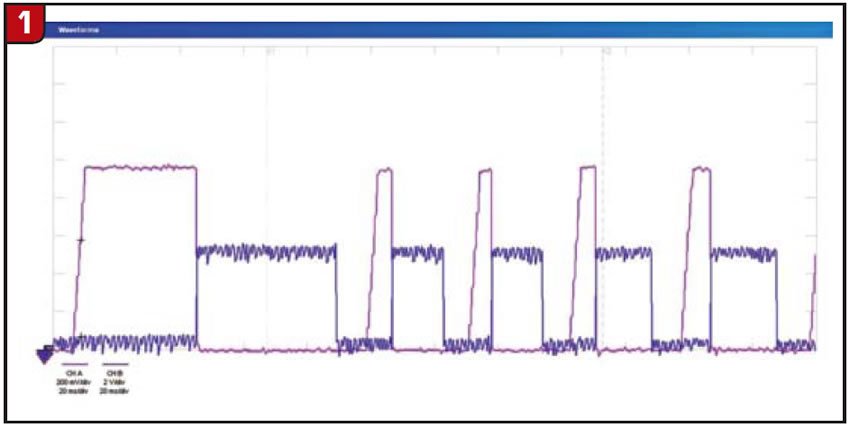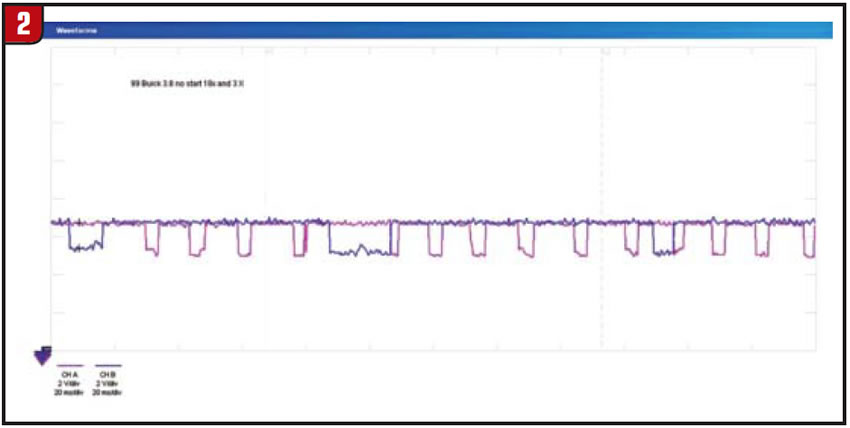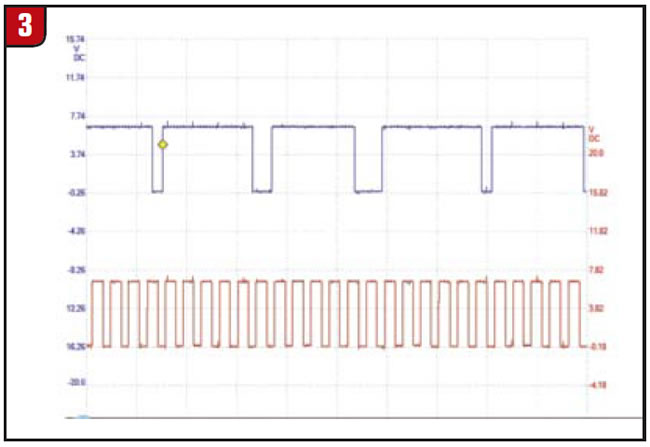
Tech to Tech
- Author: Jeff Bach
- Subject Matter: Diagnosis
- Issue: Theft system prevents starting
Is trading out car parts the answer to this dilemma?
I recently fixed a neighbor’s car that wasn’t starting due to the theft system not reading the key. I’m sure that some of you are familiar with the method of fooling the security module by bypassing the passkey ignition switch with a resistor. I got a call from him a few days later saying that it messed up again with the same problem. He wanted to know if the resistor went bad.
I took a look at the car and realized that the theft light was staying on, but it wasn’t working normally. It didn’t flash with the door open and it wouldn’t set the security system. It also wouldn’t disarm with the key in either door. I realized that it was a security issue, but not a passkey problem.
This model has basically two security systems tied together by one warning light. The passkey system prevents the car from starting by keeping the injectors from working until the powertrain control module (PCM) gets a password from the theft module after the cluster reads the right key pellet resistance.
The security module monitors the door-ajar and trunk switches along with tamper switches in the door-lock and trunk-lock cylinders. The module puts out a 12-volt signal on the tamper circuit and goes low if any of these are grounded. That puts the system into theft mode. I looked further into the system and discovered that one of the tamper switches was grounding the tamper circuit and keeping the car from starting. I could see that the trunk had an electric closing unit that wasn’t pulling the lid closed. I asked the guy how long the trunk had been staying up like that. He said he thought it was caused by the theft problem because it started doing that at the same time the car quit starting.
I decided to take the circuit out of the picture by removing it temporarily from the connector at the theft module. This allowed the theft light to go out after about five seconds with the key on. Upon cranking the engine I could see that it still wouldn’t start.
Now, this neighbor owns a motorcycle-repair shop and sells used cars. I explained to him what I had found so far, then showed him that the theft light was going out but that the car had another issue preventing it from starting. He then told me that he knew it wasn’t the coils because he had replaced them and it still wouldn’t start. He was going for the crank sensor next as a try but decided that it was time to have me look at it to be sure it wasn’t what I had just done.
I got my scope out and decided that it was time to do a little testing. I grabbed one of the injector control circuits with the current probe and the cam-position (CMP) sensor with the other channel.

Seeing that the injectors were working and that I had the CMP signal (Figure 1), I checked out the ignition system next.

I connected to the 18x and the 3x crank-sensor signals at the ignition module, which is easy access in the front corner of the engine, and got the pattern in Figure 2.

Notice that the signals are not reaching anywhere near ground level. The arrows on the left side of the screen indicate the 0 point. This was obviously not getting the job done. One of the common issues with these cars is that the corrosion between the module and the mounting bracket prevents the module from grounding properly.
I referred to the waveform library of iATN for a picture of what I should have been showing on those two signals (Figure 3). I pulled the module off. Sure enough, it was badly corroded.

I cleaned the surfaces and reinstalled the module, hoping for a quick fix.
I got the same pattern as before, but at least I knew it wasn’t the module ground issue. I had good power and ground circuits for the module, but I was getting signals from the crank sensor that would make one lean toward the sensor as the problem.
I checked the signals to the crank sensor and noticed that the ground was at almost 6 volts. The sensor grounds through the module. The module has one separate ground, which tested OK. This pretty much made it a bad module. I obtained another module, and the car fired right up. The problem with this scenario is that I first had a different issue with the security system, which is what kept the car from starting. The guy tried tracing the problem himself and quite possibly took out the module by either connecting and disconnecting it with the key on or maybe spiking it with his battery charger. This guy does go through computers on these used cars fairly frequently.

He believes in cars being jinxed and sometimes uses the term “possessed” to describe a problem with a vehicle. I get a few cars I’ve received from this guy that have turned out to be “two-part” problems.
There are a lot of cars these days that get fixed by the “part-swapping” method. I have even seen a pattern of techs using a “like vehicle” as a donor. This involves either swapping parts from the good car to the bad one or vice versa to test components, trying to troubleshoot a problem.
The batting percentage is pretty good with this method until the car ends up needing more than one component or a circuit repair to fix it. That’s usually when I get them. The odds of guessing the right two problems are much less likely to end up in a fixed-car scenario. I see a lot of problems created by well-meaning “would be” technicians who make the original problem a lot more difficult to diagnose. Loose terminals and blown modules are fairly common. Swapping programmed or coded modules can create a whole different level of problems.
I tried to educate the guy about spiking computers and having the key on when hooking up the charger. I got a little frustrated and then suddenly I got tickled remembering a similar situation my dad had during a conversation with a guy he knew years earlier. I remember him stopping in mid-sentence and saying, “You know they say wisdom comes with age – but sometimes, age just comes by itself.”
It became difficult to get away from the “So it’s the same problem” statement.
I found myself saying, “I can take the resistor bypass module out and the car won’t start because your ignition-lock-cylinder key-reader circuit is open and the theft module thinks someone is trying to steal the car.
“I can put your old module back in and the car won’t start because your module is possessed. I can hook the security-module circuit back up and the car won’t start because the trunk-lid tamper switch is bad and the computer thinks someone is breaking into the trunk.
“I can put this demon-free module in and tell the theft-system computer two lies for this price. What would you like for me to do?”
He laughed. “Do it,” he said.

Jeff Bach is the owner of CRT Auto Electronics in Batavia, Ohio. You can reach him at [email protected].
This copyrighted article is reprinted with the permission of AutoInc., the official publication of the Automotive Service Association (ASA). To learn more about ASA and its commitment to independent automotive-service and repair professionals, visit www.ASAshop.org or call 800-272-7467.













